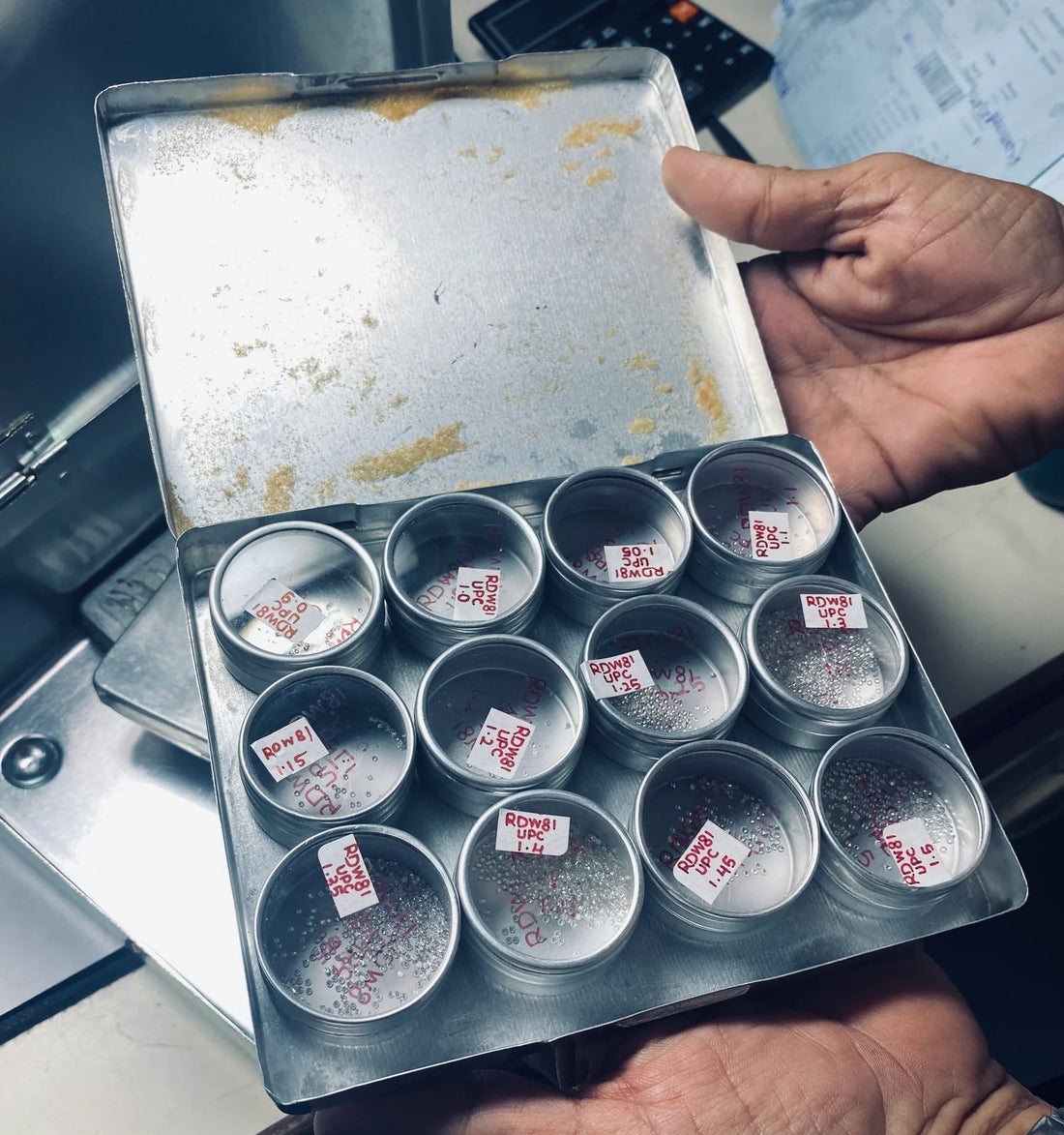How Much Carbon Does It Take to Produce One Carat of Diamond?
Understanding the environmental impact behind each carat reveals the true value of conscious choice.
Mined Diamonds
The extraction of a single carat of diamond from the earth has a significant carbon footprint, estimated at 160 to 200 kg of CO₂. That’s equivalent to the monthly electricity consumption of an average household in France (around 180 kg CO₂), or a 60,000 km journey on a high-speed train.
This high impact is due to two main factors: mining operations require vast amounts of energy to extract and transport rock, and the equipment used—such as heavy machinery, pumps, and ventilation systems—is often powered by fossil fuels.
Lab-Grown Diamonds
Lab-created diamonds have a lower carbon footprint, ranging from 20 to 40 kg of CO₂ per carat. This is roughly equivalent to 3 to 6 days of electricity use in a typical home. While they avoid mining, lab diamonds still require considerable amounts of electricity, often depending on the source of energy used.
Rosa Maïtea’s Recycled Diamonds
Recycled diamonds have the smallest environmental footprint. The process of collecting, sorting, cleaning, and re-cutting consumes only 1 to 5 kWh per carat—about 1% of the energy required for traditional mining. Carbon emissions are estimated between 5 and 10 kg of CO₂ per carat, representing a 95% reduction compared to mined diamonds.
This remarkable difference is made possible because no new material is extracted from the earth. The processing steps are minimal and far less energy-intensive, and transportation-related emissions are kept low.
Why Choose Recycled Diamonds?
They are ecological, with a drastically reduced carbon and energy footprint. They are ethical, avoiding the social and environmental risks of mining. And they are sustainable, offering the same quality and brilliance as newly mined stones—without compromise.
A diamond with a past, reimagined for a more conscious future.

